by Jonas E. Alexis
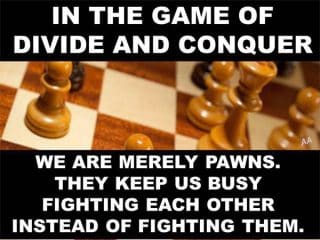 The Dreadful Few are masters of “divide and conquer.” If you doubt this, listen to Vladimir Lenin on the eve of the Bolshevik Revolution. When many of his opponents began to fight among themselves, Lenin proclaimed,
The Dreadful Few are masters of “divide and conquer.” If you doubt this, listen to Vladimir Lenin on the eve of the Bolshevik Revolution. When many of his opponents began to fight among themselves, Lenin proclaimed,
“Do fight each other, I’ll enjoy it all from the sidelines, and once you’ve knocked one another out, then…”[1]
Victor Suvorov noted that “While brother was fighting brother, the Communists solidified and expanded their rule. Within a few years they subjugated the entire country.”[2]
Stalin adopted a similar tactic in 1939. He said,
“Let Germany fight in the west, simultaneously wearing out itself and the Western Allies. We’ll do whatever it takes to help Germany get utterly exhausted, and then…”[3]
Fast forward to 2013, Jewish Neocon Daniel Pipes clung to the exact tactic in order to destabilize the Syrian government. Pipes knew pretty well that the Syrian rebels are largely terrorists and that supporting them would weaken the neoconservative cause. Nevertheless, Pipes declared,
“Western governments should respond by helping the rebels to prevent Assad from crushing them…The West should prevent either side in the civil war from emerging victorious by helping whichever side is losing, so as to prolong their conflict.”
Pipes was so blinded by his Talmudic reasoning that he could not see this ideology could backfire badly. Moreover, he could not see that this would eventually take a toll on American taxpayers.
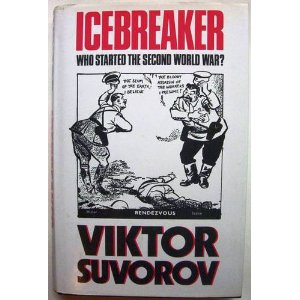 As the old saying goes, there is nothing new under the sun, and the Dreadful Few deliberately used the “divide and conquer” strategy to usurp the largely cohesive morals in America during the civil rights movement.
As the old saying goes, there is nothing new under the sun, and the Dreadful Few deliberately used the “divide and conquer” strategy to usurp the largely cohesive morals in America during the civil rights movement.
Jews who supported the civil rights movement saw it as a perfect opportunity to ally themselves with angry blacks, who saw the civil rights movement as a way to stamp out “racism” in American society.
Jewish author Arthur Miller, known for his influential novel The Crucible, was “actively engaged in the broad range of liberal causes, from civil rights and racial integration to the American Communist Party’s rights to exist.”[4]
Born in 1915 in New York, Miller recalled his maternal grandfather telling him “never to walk under a large lighted cross overhanging the sidewalk outside a Lenox Avenue church; if by accident I did, I must spit when I realized what I had done, in order to cleanse myself.”[5]
On the eve of the civil rights movement, Jewish novelist Norman Mailer wrote an essay entitled “The White Negro,” which served to add gasoline to the flames of the civil rights movement.
Mailer later “admitted having second thoughts about [the essay], saying that he had been using drugs at the time, was afflicted by self doubt, and had written the essay more for ego gratification and symbolic catharsis than to influence anyone’s opinion.”[6]
What is particularly crucial to our study here is that the civil rights movement was largely funded by Jewish financiers and moguls, people who had a predisposition to ignite political fire where it was unnecessary. Jewish scholar Benjamin Ginsberg writes in Fatal Embrace:
“Jews served as major financiers and strategists for the civil rights movement. Jews served as well as the key liaisons between the civil rights movement and the government during both the Kennedy and Johnson eras.
“Jewish groups, organized through the National Jewish Community Relations Advisory Council, had long worked closely with blacks in efforts to eliminate housing and employment discrimination from the 1950s and after.
“Jewish organizations also worked closely with civil rights groups during the 1960s in their struggles on behalf of voting rights and for the desegregation of public facilities and accommodations. Jewish contributors provided a substantial share of the funding for such civil rights groups as the NAACP and CORE…
“Stanley Levinson, a longtime official and fund-raiser for the American Jewish Congress, became Martin Luther King’s chief aide and advisor…Harry Wachtel was a major legal advisor and fundraiser for the SCLC. Levison and Wachtel were often called King’s twin Jewish lawyers.
“Jack Greenberg, head of the NAACP Legal Defense Fund was the most important civil rights lawyer in the United States. Jews comprised a large segment—perhaps one-third of the whites who participated in civil rights marches and protests in the South during the 1960s.”[7]
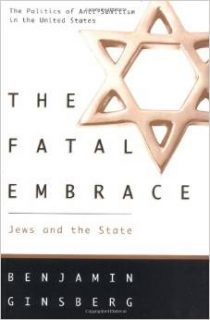 Jewish historian Howard M. Sachar states that Jews
Jewish historian Howard M. Sachar states that Jews
“were the earliest supporters of the fledging National Association for the Advancement of Colored People (NAACP). In 1914, Professor emeritus Joel Spingarn of Columbia University became chairman of the NAACP and recruited for its board such Jewish leaders as Jacob Schiff, Jacob Billikopf, and Rabbi Stephen Wise.”[8]
The public generally believes that the NAACP was founded by people like W. E. B. Du Bois, but the truth is that the organization was exclusively Jewish from its inception, founded by Henry Moscowitz (a German Jew) in 1909 and aided by Rabbi Emil Hirsch.[9] The first president of the organization was Joel Spingarn, a professor at Columbia University, who was actively involved in the civil rights movement.[10]
The NAACP, like Freudian psychoanalysis and Neoconservatism, did attract a number of non-Jews, but its founding principles were Jewish. Jewish historian Hasia Diner declares that since German Jews did not feel fully at ease in America, “black issues provided an attractive forum to work out certain tensions of acculturation.”[11]
Jewish historian Murray Friedman writes, “In Diner’s view, Jewishness in all of its social and psychological dimensions drew Jews into activist roles on behalf of blacks.”[12]
For historian David Levering Lewis, although the Black-Jewish alliance did not produce much good fruit, it eventually “gave rise to an unworkable paradigm of success.”[13]
Like Harold Cruse and others, Lewis saw the Black-Jewish alliance as a weapon “to fight anti-Semitism by remote control” (although Lewis seemed to have backed off from that position by 1993).
If you think this is just a relic of the past, the Washington Times reported a few days ago that George Soros spent at least $33 million agitating insurrection in Ferguson. Here is what the Washington Times says,
“There’s a solitary man at the financial center of the Ferguson protest movement. No, it’s not victim Michael Brown or Officer Darren Wilson. It’s not even the Rev. Al Sharpton, despite his ubiquitous campaign on TV and the streets.
“Rather, it’s liberal billionaire George Soros, who has built a business empire that dominates across the ocean in Europe while forging a political machine powered by nonprofit foundations that impacts American politics and policy, not unlike what he did with MoveOn.org.
“In all, Mr. Soros gave at least $33 million in one year to support already-established groups that emboldened the grass-roots, on-the-ground activists in Ferguson, according to the most recent tax filings of his nonprofit Open Society Foundations.”[14]
Kassandra Frederique, policy manager at the Drug Policy Alliance, which was founded by Mr. Soros, and which receives $4 million annually from his foundation, said,
“I went to Ferguson in a quest to be in solidarity and stand with the young organizers and affirm their leadership.”
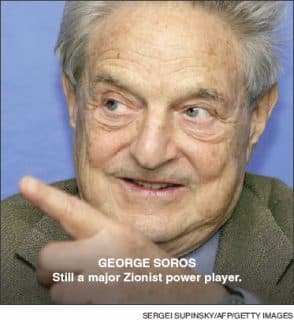 The Washington Times reported,
The Washington Times reported,
“Ms. Frederique works with Opal Tometi, co-creator of #BlackLivesMatter — a hashtag that was developed after the killing of Trayvon Martin in Florida — and helped promote it on DPA’s news feeds.
“Ms. Tometi runs the Black Alliance for Just Immigration, a group to which Mr. Soros gave $100,000 in 2011, according to the most recent of his foundation’s tax filings.
“‘I think #BlackLivesMatter’s success is because of organizing. This was created after Trayvon Martin, and there has been sustained organizing and conversations about police violence since then,’ said Ms. Frederique.
“‘Its explosion into the mainstream recently is because it connects all the dots at a time when everyone was lost for words. ‘Black Lives Matter’ is liberating, unapologetic and leaves no room for confusion.’
“With the backing of national civil rights organizations and Mr. Soros‘ funding, “Black Lives Matter” grew from a hashtag into a social media phenomenon, including a #BlackLivesMatter bus tour and march in September.
“‘More than 500 of us have traveled from Boston, Chicago, Columbus, Detroit, Houston, Los Angeles, Nashville, Portland, Tucson, Washington, D.C., Winston-Salem, North Carolina, and other cities to support the people of Ferguson and help turn a local moment into a national movement,’ wrote Akiba Solomon, a journalist at Colorlines, describing the event.
“Colorlines is an online news site that focuses on race issues and is published by Race Forward, a group that received $200,000 from Mr. Soros’s foundation in 2011. Colorlines has published tirelessly on the activities in Ferguson and heavily promoted the #BlackLivesMatter hashtag and activities.
“At the end of the #BlackLivesMatter march, organizers met with civil rights groups like the Organization for Black Struggle and Missourians Organizing for Reform and Empowerment to strategize their operations moving forward, Ms. Solomon wrote. OBS and MORE are also funded by Mr. Soros.
“‘Mr. Soros gave $5.4 million to Ferguson and Staten Island grass-roots efforts last year to help “further police reform, accountability and public transparency,’ the Open Society Foundations said in a blog post in December. About half of those funds were earmarked to Ferguson, with the money primarily going to OBS and MORE, the foundation said.
Representatives of Sojourners, a national evangelical Christian organization committed “to faith in action for social justice,” attended the weekend. The group received $150,000 from Mr. Soros in 2011.”[15]
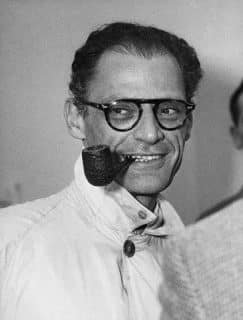
During the 1960s, blacks and the civil rights movement were ideal allies for Jews and their revolutionary purposes; there was also a disproportionate number of Jewish women who joined the movement.[16]
Yet blacks contributed little to running the NAACP until the 1930s. In other words, the blacks were being used as pawns in the service of a larger Jewish revolutionary ideology. In the words of Jewish author Gelya Frank, Jews used both the civil rights movement and the NAACP as “remote control.”
Israel Shahak likewise noted,
“The apparent enthusiasm displayed by American rabbis or by the Jewish organizations in the U.S.A. during the 1950s and the 1960s in support of the Blacks in the South, was motivated only by considerations of Jewish self-interest, just as was the communist support for the same Blacks…
“Stalin and his supporters never tired of condemning the discrimination against the American or the South African Blacks, especially in the midst of the worst crimes committed within the USSR…
“Its purpose in both cases was to try to capture the Black community politically, in the Jewish case to an unthinking support of Israeli policies in the Middle East.”[17]
Friedman expresses the same opinion, reflecting that
“Jews did not just organize for their own defense; they also rallied to the defense of blacks, who faced even greater terrors. Why did Jews do so?
“Possibly it was because, as a pariah people themselves, they easily identified with another group of even more oppressed outsiders. They were no doubt also encouraged by the implicit moral imperatives of Judaism.”[18]
Ginsberg declares,
“More than half the white lawyers who made their services available to civil rights demonstrators in the South were Jews. Between half and three-quarters of the contributors to civil rights organizations—including the Student Non-Violent Coordinating Committee (SNCC), CORE, and Dr. King’s Southern Christian Leadership Conference—were Jews.
“More than half the white freedom riders were Jews. Almost two-thirds of the whites who went into the South during the Freedom Summer of 1964 were Jews including, of course, Michael Schwerner and Andrew Goodman who, along with their black colleague James Chaney, were murdered by racist thugs in Mississippi.”[19]
Sachar, quoting a black leader of that era, writes that “as many as ninety percent of the civil rights lawyers in Mississippi were Jewish.”[20]
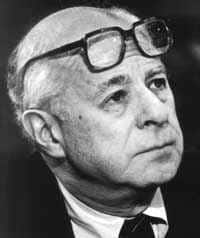
Ginsberg goes on to acknowledge the self-interested Jewish ideologies behind the movement:
“During the 1960s, Jews joined with other liberal Democrats and with blacks in the civil rights and anti-Vietnam War movements.
“Through this alliance, Jews were able to weaken their conservative Southern adversaries as well as their Northern white working-class rivals within the Democratic Party, and to virtually destroy the traditional party machines upon which these forces depended for their power.”[21]
One black Communist intellectual who began to see the forces behind those ideologies was Harold Cruse. Ginsberg writes,
“Through the 1960s, blacks were a subordinate group on the Left especially within the Communist Party which was dominated by Jewish intellectuals. Harold Cruse, a black Communist, described the situation in his 1967 work, The Crisis of the Negro Intellectual.
“Jewish Communists, said Cruse, felt compelled to ensure their complete political and ideological power over their Negro allies.
“To this end, according to Cruse, Jewish Communists sought to dominate the field of ‘Negro studies’ and made certain that Jews always held the top Communist Party posts in the black community.”[22]
Cruse bluntly stated,
“Among the many myths life and history have imposed on the Negroes is the myth that the Negro’s best friend is the Jew. Far more accurately, certain Jews have been the best friend of certain Negroes—which, in any case, is nothing very unusual…
“There is little evidence that the Jewish group was much interested in the Negro’s plight for ‘social uplift’ reasons prior to the age of Booker T. Washington and the NAACP era that followed.
“But this is not to say that Jews were not accurately aware of the Negro’s existence. How aware certain Jews were, is revealed in a very unlikely source—the autobiographical notes of the great Russian writer, Feodor M. Dostoevsky.”[23]
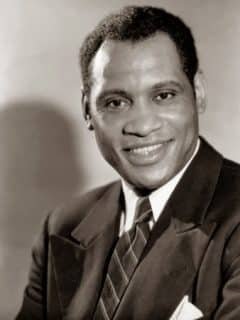
Cruse quotes Dostoevsky’s own words, penned in 1877:
“[Jews] have already leaped en masse upon the millions of liberated Negroes, and have already taken a grip upon them in their, the Jews’ own way, by means of their sempiternal ‘gold pursuit’ and by taking advantage of the inexperience and vices of the exploited tribe…the Negroes have now been liberated from the slave owners, but that they will not last because the Jews, of whom there are so many in the world, will jump at this new little victim.”[24]
Dostoevsky would perhaps be surprised to know that some of his predictions have come to pass. Nearly all the blacks of the “Harlem Renaissance” era received support from wealthy Jews. And according to some witnesses, almost all the teachers in Harlem were Communist Jews. Mark Naison of Fordham University notes,
“According to Richard B. Moore, Jewish-Americans provided many of the shock troops for Harlem protests around the Scottsboro issue and constituted the bulk of the white administrators and education directors sent in to Harlem section after James Ford’s accession to leadership.
“Alice Citron and Morris Schappes, whites active in the Harlem section, recall that almost all of the white Communist teachers and relief workers in Harlem were of Jewish ancestry.”[25]
Even the “Negro-Jewish alliance” in some cases was used to portray Jews in a positive light, most particularly among Communists in Harlem.[26]
In the process, many of the era’s black artists and lawyers, such as Paul Robeson and Benjamin J. Davis, Jr., praised their relationship with the Jews; Robeson for example “predominantly featured Yiddish songs in his concert repertoire.”[27]
And many Jewish organizations supported black artists.
“Right through the forties the Rosenwald Fund subsidized many black artists and writers with grants and fellowships. The recipients included Ralph J. Bunch in political science, Marian Anderson in music, John Hope Franklin in history, Kenneth Clark in psychology, and Gordon Parks in photography. Among the writers Rosenwald assisted were Ralph Ellison, James Baldwin, and William Motley, as well as [Langston] Hughes.”[28]
Jewish radicals like Marx Lieber, who became Langston Hughes’s literary agent, believed that blacks should concentrate their talent on revolutionary work.
“[Lieber’s] profitable production of Erskine Caldwell’s play Tobacco Road permitted him to indulge his social passions. He kept reminding Hughes and the other writers he represented of their leftist political obligations while representing them in negotiations with bourgeois publishers.”[29]
 Lieber eventually helped Hughes gain recognition by selling one of Hughes’s poems, “Slave on the Block,” to Scribner’s magazine. Other blacks gained renown in a similar way, including James Baldwin, “whose talent was first recognized and nurtured by Jewish editors of small but influential magazines” such as Commentary, New Leader, and Partisan Review.[30]
Lieber eventually helped Hughes gain recognition by selling one of Hughes’s poems, “Slave on the Block,” to Scribner’s magazine. Other blacks gained renown in a similar way, including James Baldwin, “whose talent was first recognized and nurtured by Jewish editors of small but influential magazines” such as Commentary, New Leader, and Partisan Review.[30]
When Baldwin’s “The Harlem Ghetto” first appeared in Commentary, sociologist Nathan Glazer, a member of its editorial board, praised Baldwin as a talented black writer, “how remarkable we didn’t yet know.”[31]
To this end, the editors of Commentary asked Baldwin to write a piece dealing with the issues of blacks and Jews, which Baldwin reluctantly agreed to do. For Baldwin, this issue was puzzling because he saw blacks suffering under the hands of Jewish exploiters. He declared,
“When we were growing up in Harlem our demoralizing series of landlords were Jewish, and we hated them.”[32]
Jewish historian Roberta Strauss Feuerlicht tells us that
“the landlords were hated because they did not paint or repair or heat, they just collected exorbitant rents…
“Baldwin lists the other Jews that blacks hated: the grocer, to whom they were in debt; the butcher, who sold them bad meat at high prices; and most of all, the pawnbroker.
“‘It is bitter,’ he wrote, ‘to watch the Jewish storekeeper locking up his store for the night, and going home. Going, with your money in his pocket, to a clean neighborhood, miles from you, which you will not be allowed to enter.’[33]
“The overwhelming presence of the Jew as landlord, storekeeper, and boss made black anti-Semitism inevitable. Stokely Carmichael wrote, ‘Exploitation by Jewish landlords and merchants…first created black resentment toward Jews—not Judaism.’”[34]
Like the Jews in Poland, Jews in New York resorted to old tricks:
“In 1960 sociologist David Caplovits did a study on ‘The Merchant and the Low-Income Consumer.’ He said that ‘many, if not all, of the merchants happen to be Jews and many of the customers are Negroes.’ Caplovitz found that the merchants used all the traditional tricks to prey upon the poor: installment plans, overpricing, and bait-and-switch tactics.”[35]
For that reason,
“Black anti-Semitism was a response not only to the ghetto businessman but to Jewish racism. Many blacks have written that they expected more from Jews; they felt that a people so discriminated against should not discriminate.”[36]
Irving Louis Horowitz, a Jewish sociologist and professor, recounted that his parents used to cheat the black Christians, counting it
“a special occasion on which my father wreaked his own revenge on Christendom.”[37]
Horowitz remembered:
“The scam went like this: the unsuspecting customer would bring in all light bulbs for testing. Each bulb would be placed against the side of the bulb tester rather than against the filament that would light up the bulb. The trick was easily learned and passed on to my mother, my sister, and me. I became a master at this special bulb test.
“When the same bulbs were retested after the customer left, they almost always were found to be perfect, or least good enough for resale. My father placed them into inventory and sold them as new. The special bulbs were resold countless times each season.
“Hence, it was no accident that the volume of December bulb sales probably surpassed that of any other month. December profits also showed remarkably uncharacteristic good health.”[38]
Eventually, Norman Podhoretz talked Baldwin into writing “his most famous essay,” entitled “Letter from a Region in My Mind,” which was later published in book form as The Fire Next Time and “remained on the bestseller list for forty-four weeks, helping to make Baldwin America’s most widely read black author.”[39]
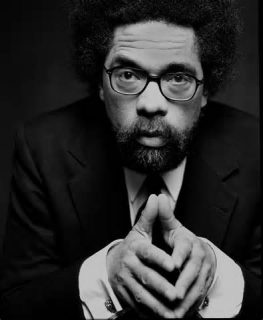
This book, Friedman tells us, “represented black rage against white America and pioneered a genre that other black writers would adopt.”[40]
Richard Wright, who joined the Communist Party in 1933 and whose first and second wives were Jewish, added to the “black rage” genre in 1957 with the publication of White Man, Listen!
Baldwin’s influence continues to this day, and can be seen in the writings of intellectuals such as Cornel West (Race Matters) and Michael Eric Dyson (Race Rules). Even media personalities such as Jesse Jackson and con men such as Al Sharpton are products of this genre, although on many occasions they divert their ranting against Jews themselves (a classic example is the Gavin Gato incident in 1991).
Since the Dreadful Few are a small minority, they join other minorities such as the blacks to form alliances aimed at weakening the majority. As we have seen in the introduction, their political ancestors such as Lenin have employed the same strategy.
“Increasingly, as Jews found themselves succeeding in the American social order and thereby wandering from an identity based on centuries of marginalization, they identified with outsiders to even the balance.
“As gambling, radical politics, and black music grew chic among the smartest, jazziest cliques, even gentile Americans could participate in the course of difference.
“In the grand, decade-long showdown between the old and new that characterized the Jazz Age, descendents of the great Jewish migration found themselves in the middle of the fray. Their tendency to identify themselves with the causes of outsiders had flung them there.”[41]

Perhaps the most prominent black writer during the 1930s was Richard Wright, known for books such as Native Son and Black Boy. He joined the Communist Party in 1933.
Wright’s first married Jewess Dhima Rose Meadman in 1939, but got divorced two years later. His second wife, also Jewish, was Ellen Polar, a Communist Party organizer in Brooklyn, with whom he had two children.
In his fiction, Wright “has a Jewish Communist, Boris Max, defend his black protagonist in Native Son. When the protagonist refuses to cooperate in a police investigation because police ‘hate black folks,’ Wright has Max reply, ‘They hate others too. They hate me because I’m trying to help you. They’re writing me letters calling me a ‘dirty Jew.’”[42]
Friedman notes that
“the Communist leadership made a conscious point of dispatching Jewish party members to Harlem, where they operated under Komintern discipline.
“In certain respects their mission was analogous to that of the nineteenth-century revolutionaries who had sought to radicalize the Russian peasantry. One historian has observed that their Jewish ancestry may have inclined these radical missionaries to manifest a strong emotional response to black oppression.”[43]
The communist party “saw a political vacuum in the ghettos of America and sought to exploit it.”[44] This was because, as Jewish historian Arthur Liebman noted, Jews “saw blacks as more likely and more eligible recruits for Marxism.”[45]
This campaign was especially successful among black writers and artists, and in the process, black luminaries such as Lorraine Hansberry (A Raisin in the Sun), John Wideman (Brothers and Keepers), and Alice Walker (The Color Purple) all married Jews.[46]
Hansberry became a thorough revolutionary because she embraced the subversive spirit which dominated the Dreadful Few. As E. Michael Jones rightly puts it, “the price the Negro has to pay for marriage (both literal and figurative) with the Jews is 1) loss of faith in God and 2) moral corruption.”[47]
By the time a Raisin in the Sun was written, Hansberry was already lost her faith in God, saying things like,
“God hasn’t got a thing to do with it….God is just one idea I don’t accept…I get tired of Him getting credit for all the things the human race achieves through its own stubborn effort. There simply is no God—there is only man and it is he who makes miracles.”[48]
The last sentence is really troublesome because it implies that Hansberry was carrying an intellectual burden which literally destroyed her position. In fact, if one follows this premise to its logical conclusion, then philosophical worthlessness is the end result.
If there is “only man” and if “it is he who makes miracles,” by what logical inference can Hansberry say that genocide or slavery is wrong? In fact, “miracles” like slavery were largely made by men—more precisely the Dreadful Few in the nineteenth century.
If there is no ultimate transcendent moral virtue or value, who is Hansberry to tell us that might does not make right? Hansberry’s argument again is philosophically dead and logically indefensible.
We have addressed the slavery issue in numerous articles in the past. Why didn’t Hansberry pose that particular issue to her revolutionary husband, who probably knew about the forces behind nineteenth century slavery? He taught her virtually everything about revolution but he didn’t tell her anything about the masters of the slavery business in the nineteenth century?
Hmmm…Interesting.
Hansberry declared at the end of her life, “Do I remain a revolutionary? Intellectually—without a doubt. But am I prepared to give my body to the struggle or even my comforts? This is what I puzzle about.”[49]
Hansberry was indeed morally confused and intellectually lost. Her ideological principles ultimately lead to moral relativism, which she ought to have known is logically unacceptable and intellectually impermissible.
In many ways, the election of Obama as president of the United States reinstated the Black-Jewish alliance. In 2008, the Israeli newspaper Haaretz wrote that “Obama’s Historic Win Revives the Black-Jewish Civil Rights Alliance.”[50] Marc Schneier, an Orthodox rabbi who established the Foundation for Ethical Understanding twenty years ago, puts it bluntly:
“No other sector of American society provided a stronger and more consistent reservoir of support in the struggle of African-Americans than the Jewish community.”[51]
Jews in the White House during President Obama’s first term included Rahm Emmanuel (White House Chief of Staff), Ben Bernanke (Chairman, Federal Reserve), Timothy Geithner (Secretary of Treasury), Peter Orszag (Director, Office of Management and Bud-get), Larry Summer (Chief Financial Advisor), and David Axelrod (Chief Political Advisor).
It is issues like these that clearly reveal the driving principles behind the Dreadful Few supporting minorities. It is not because they love to support justice and fight oppression; if that were the case, they would have been unanimously outraged by Israel’s vicious and blatant racism.
Attorney general Eric Holder—who has been cooperating with the Anti-Defamation League [ADL] for many years, going back to the “early ‘90s when I served as the United States Attorney in Washington, D.C.”—made a stunning remark in 2009:
“The Obama Administration could ask for no better partner than the Anti-Defamation League as we jointly strive to attain the ideals of equal opportunity, equal rights, and equal justice for all.”[52]
Yet Holder made it clear before the Senate Judiciary Committee that this “equal justice for all” would not cover Christian ministers who teach that homosexual behavior is wrong in their own churches or parishes. When confronted by the illogic of his own argument, Holder said:
“The statue [of the bill] would not necessarily cover [Christians]…We’re talking about crimes that have a historic basis, groups who have been targeted for violence as a result of the color of their skin, their sexual orientation, that is what this statue is designed to cover.”
So it was not “equal justice for all,” merely “equal justice for those we deem worthy.”
This issue became obvious on Election Day 2008 in Philadelphia when three members of the Black Panther party intimidated voters, with at least one person wielding a nightstick.[53]
Eric Holder never prosecuted these people. And get this: when the FBI recorded the number of crime incidents for 2008, the ADL decried it as “a rise of hate crimes in the United States against African Americans, Jews, and gays,” with both ADL’s National Director, Abraham Foxman, and National Chair, Robert G. Sugarman, confirming,
“Hate violence in America is a serious national problem that shows little sign of slowing. The annual FBI report on hate crime statistics provides a chance to assess the scope of the problem.”[54]
[1] Quoted in Viktor Suvorov, Icebreaker: Who Started the Second World War? (Bristol: PL UK Publishing, 2012), kindle edition.
[2] Ibid.
[3] Ibid.
[4] Martin Gottfried, Arthur Miller: His Life and Work (New York: Da Capo Press, 2003), 157.
[5] Elliott Horowitz, Reckless Rites: Purim and the Legacy of Jewish Violence (Princeton: Princeton University Press, 2006), 185.
[6] Murray Friedman, What Went Wrong?: The Creation and Collapse of the Black-Jewish Alliance (New York: Free Press, 2007), 271-272.
[7] Benjamin Ginsberg, The Fatal Embrace: Jews and the State (Chicago: University of Chicago Press, 1993), 126.
[8] Howard M. Sachar, A History of Jews in America (New York: Knopf, 1992), 803.
[9] Sasha Polakow-Suransky, The Unspoken Alliance: Israel’s Secret Relationship with Apartheid South Africa (New York: Pantheon Books, 2010), 171
[10] Ibid.
[11] Friedman, What Went Wrong?, 58.
[12] Ibid.
[13] Ibid., 58-59.
[14] Kelly Riddell, “George Soros funds Ferguson protests, hopes to spur civil action,” Washington Times, January 14, 2015.
[15] Ibid.
[16] See Debra L. Schultz, Going South: Jewish Women in the Civil Rights Movement (New York: New York University Press, 2001).
[17] Israel Shahak, Jewish History, Jewish Religion: The Weight of Three Thousand Years (New York: Pluto Press, 2002), 103.
[18] Jones, Jewish Revolutionary Spirit, 702.
[19] Ginsberg, The Fatal Embrace, 146.
[20] Sachar, Jews in America, 803.
[21] Ibid., 225.
[22] Ginsberg, Fatal Embrace, 177.
[23] E. Michael Jones has an extensive chapter on this issue in The Jewish Revolutionary Spirit. If one is to understand the “Jewish question,” this particular book is worth every dime. Actually, it was that particular book that woke me up from my “dogmatic slumber,” to use Emmanuel Kant’s words.
[24] Ibid.
[25] See Mark Naison, Communists in Harlem during the Depression (Urbana and Chicago: University of Illinois Press, 1983), 321.
[26] Ibid., 324-325.
[27] Ibid., 325.
[28] Friedman, What Went Wrong?, 112.
[29] Ibid., 112-113.
[30] Ibid., 113.
[31] Ibid.
[32] Roberta Straus Feuerlicht, The Fate of the Jews: A People Torn Between Israeli Power and Jewish Ethics (New York: Times Books, 1983), 190.
[33] Ibid.
[34] Ibid., 190-191.
[35] Ibid., 191.
[36] Ibid.
[37] Jones, Jewish Revolutionary Spirit, 811.
[38] Ibid.
[39] Friedman, What Went Wrong?, 113-114.
[40] Ibid., 114.
[41] Michael Alexander, Jazz Age Jews (Princeton: Princeton University Press, 2001), 8.
[42] Friedman, What Went Wrong?, 121.
[43] Ibid.
[44] Ibid.
[45]Arthur Liebman, Jews and the Left (New York: John Wiley, 1979), ix.
[46] Friedman, What Went Wrong?, 121.
[47] Jones, Jewish Revolutionary Spirit, 908.
[48] Ibid., 908-909.
[49] Ibid.
[50] Shlomo Shamir, “Obama’s Historic Wins Revives the Black-Jewish Civil Rights Alliance,” Haaretz, April 10, 2009.
[51] Ibid.
[52] “Remarks by U.S. Attorney General Eric Holder,” ADL.org, October 19, 2009.
[53] Jarry Markon and Krissah Thompson, “Bias led to ‘gutting’ of New Black Panthers case, Justice Official says,” Washington Post, September 25, 2010.
[54] “ADL Decries Rise in U.S. Hate Crimes against Blacks, Jews and Gays,” Haaretz, November 11, 2009
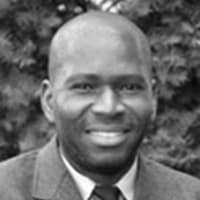
Jonas E. Alexis has degrees in mathematics and philosophy. He studied education at the graduate level. His main interests include U.S. foreign policy, the history of the Israel/Palestine conflict, and the history of ideas. He is the author of the new book Zionism vs. the West: How Talmudic Ideology is Undermining Western Culture. He teaches mathematics in South Korea.
ATTENTION READERS
We See The World From All Sides and Want YOU To Be Fully InformedIn fact, intentional disinformation is a disgraceful scourge in media today. So to assuage any possible errant incorrect information posted herein, we strongly encourage you to seek corroboration from other non-VT sources before forming an educated opinion.
About VT - Policies & Disclosures - Comment Policy



